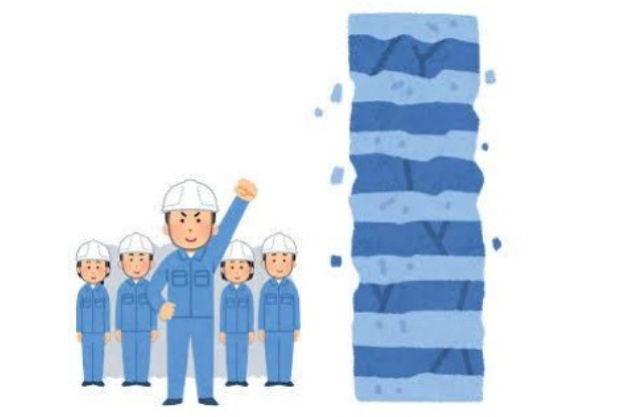


In a world where natural disasters wreak havoc with increasing frequency and intensity, Japan stands out for its remarkable resilience and unique approach to disaster preparedness and recovery. Situated in one of the most seismically active regions on Earth and frequently battered by typhoons, floods, and tsunamis, Japan has honed its disaster management strategies over centuries of experience. From early warning systems to community resilience initiatives, Japan's comprehensive approach to disaster mitigation serves as a model for nations worldwide. This article explores the key components of Japan's disaster preparedness and recovery efforts and examines the cultural, technological, and institutional factors that contribute to its effectiveness.
Central to Japan's resilience in the face of disasters is its cultural mindset, shaped by centuries of living in a volatile natural environment. The concept of "gaman," which translates to "endurance" or "perseverance," permeates Japanese society, emphasizing stoicism, patience, and collective action in times of crisis. This cultural ethos fosters a sense of solidarity and cooperation, enabling communities to come together to overcome adversity. Through rituals, traditions, and storytelling, Japanese culture reinforces the importance of resilience, adaptability, and mutual support, instilling these values in successive generations.

Japan's advanced early warning systems play a crucial role in minimizing the impact of earthquakes, tsunamis, and other natural disasters. The Japan Meteorological Agency (JMA) operates a sophisticated network of seismometers, tsunami detectors, and weather radars that provide real-time data and alerts to the public. The widely acclaimed Earthquake Early Warning (EEW) system, introduced in 2007, detects the initial tremors of an earthquake and issues warnings seconds to minutes before the shaking reaches populated areas, allowing people to take immediate protective actions. Similarly, the JMA's Tsunami Warning System utilizes ocean buoys, coastal sensors, and seismic monitoring to forecast and disseminate tsunami alerts, giving coastal communities precious minutes to evacuate to higher ground.

Japan's infrastructure is designed and constructed with resilience in mind, incorporating stringent building codes, seismic retrofitting, and disaster-resistant technologies. The country's high-rise buildings, bridges, and highways are engineered to withstand powerful earthquakes and strong winds, reducing the risk of collapse and facilitating rapid recovery. Additionally, Japan's extensive network of seawalls, floodgates, and drainage systems mitigates the impact of tsunamis, floods, and typhoons, safeguarding coastal communities and critical infrastructure. The ongoing investment in resilient infrastructure reflects Japan's commitment to protecting lives, property, and economic assets from the destructive forces of nature.
At the foundation of Japan's disaster preparedness efforts is the concept of "jishuku," or self-help. Local communities play a proactive role in disaster prevention, response, and recovery, organizing drills, training sessions, and neighborhood watch programs. Community-based organizations, known as "jichikai" or "shimin-dan," collaborate closely with government agencies, emergency services, and volunteer groups to coordinate disaster response efforts and support vulnerable populations. This grassroots approach fosters a sense of ownership and resilience at the local level, ensuring swift and effective action when disaster strikes. By empowering individuals and communities to take proactive measures and support one another, Japan cultivates a culture of resilience that strengthens its societal fabric and enhances its capacity to bounce back from adversity.
Education and public awareness campaigns are integral to Japan's disaster preparedness strategy, ensuring that individuals and communities are informed, empowered, and capable of responding to emergencies. From an early age, Japanese students learn about disaster risks, evacuation procedures, and basic survival skills through school curriculum, drills, and educational materials. Public service announcements, emergency broadcasts, and informational websites provide ongoing guidance and updates to the general population, reinforcing a culture of preparedness and vigilance. By equipping people with the knowledge, skills, and resources to protect themselves and their communities, Japan enhances its overall resilience and reduces the potential impact of disasters on lives and livelihoods.
Recognizing the global nature of natural disasters, Japan actively engages in international cooperation and knowledge sharing to enhance disaster preparedness and response capabilities worldwide. Through initiatives such as the Sendai Framework for Disaster Risk Reduction and the United Nations Office for Disaster Risk Reduction (UNDRR), Japan collaborates with other countries, organizations, and stakeholders to exchange best practices, facilitate technology transfer, and strengthen disaster resilience at the global level. Additionally, Japan provides humanitarian assistance and disaster relief missions to countries affected by natural disasters, leveraging its expertise, resources, and technological innovations to support vulnerable communities in their time of need. By fostering international partnerships and solidarity, Japan contributes to building a more resilient and sustainable world, where communities are better prepared to withstand and recover from the impacts of natural hazards.
Japan's unique approach to disaster preparedness and recovery is a testament to its resilience, innovation, and unwavering commitment to protecting its people and assets from natural hazards. By integrating cultural resilience, advanced technology, community empowerment, and international cooperation, Japan has forged a comprehensive framework that serves as a beacon of hope and inspiration for nations around the world facing similar challenges. As the frequency and intensity of natural disasters continue to rise, the lessons learned from Japan's experience offer invaluable insights into building a safer, more resilient future for all. By embracing a holistic approach that combines traditional wisdom with cutting-edge technology and global collaboration, Japan exemplifies resilience in the face of adversity, demonstrating what is possible when communities come together to prepare, respond, and recover from disasters.